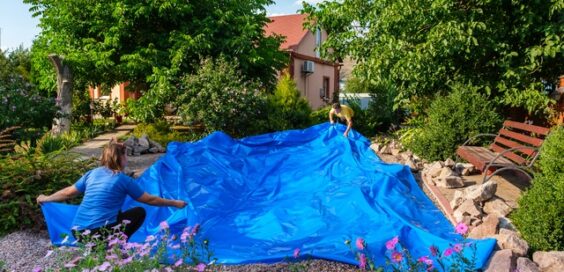Home Design: Are Pond Liners Necessary for Water Features?
Written by SayBuild-admin // August 26, 2025 // Home Exterior // Comments Off on Home Design: Are Pond Liners Necessary for Water Features?

Homeowners often wonder about the role of pond liners when designing a backyard pond or decorative fountain. You might picture a natural pond in a serene garden, yet the construction process demands you consider water retention, structural integrity, and material choices. Your climate, soil type, and long-term maintenance costs all influence a liner’s role in your landscape design.
Understanding Pond Liners and Their Purpose
Pond liners form a reliable waterproof barrier that stops water from seeping into surrounding soil. Manufacturers produce them from materials such as EPDM rubber, PVC, or RPE to meet different durability and flexibility needs. Pond liners are necessary for water features because they ensure consistent water levels and protect against soil erosion.
Flexible liners adapt to unique shapes, letting you design creative contours and depths. Meanwhile, reformed basins offer predictable dimensions but limit you to standardized sizes, making them less appealing for those seeking a custom aesthetic.
Evaluating Your Soil and Landscape Conditions
You should test your soil’s permeability before committing to a pond liner purchase. A quick infiltration test tells you whether your soil naturally retains water or drains quickly, which affects both cost and construction approach.
High-clay soils hold water better but require monitoring for cracks during seasonal shifts. Sloped terrain demands strategic excavation to maintain an even waterline and support liner placement.
One of the best ways to prevent leaks in your pond liner is to choose the right material and design for your landscape through careful soil evaluation. Drainage planning prevents overflow from damaging patios, walkways, or nearby planting areas, especially during heavy rainfall.
Cost, Maintenance, and Longevity Considerations
A high-quality liner often costs more upfront yet saves money over years of use by preventing leaks and water waste. Pond liners are necessary for water features because they reduce the frequency of expensive refills and minimize structural repairs caused by shifting soil.
Cheaper liners may degrade faster, leading to punctures or UV-related brittleness. Premium materials resist punctures from sharp stones or plant roots, extending the life of your water feature significantly. You can protect your investment with consistent maintenance, such as removing debris and checking for wear.
Alternatives to Pond Liners
Compacted clay ponds work well for certain properties but require careful layering and maintenance to remain watertight. Concrete basins provide unmatched durability for formal water features yet come with higher installation costs and less design flexibility.
Hybrid solutions combine partial lining with natural soil to provide structure with an organic look. Aquatic plants with dense root systems help seal minor seepage points in natural-bottom ponds while enhancing visual appeal. These plants also create a balanced habitat that benefits fish and other pond life.
Creating a water feature demands attention to design details and materials that fit your property’s unique conditions. Thoughtful planning of liner type, placement, and supporting elements directly impacts durability, maintenance needs, and overall appearance. A well-built pond or fountain becomes a focal point that enhances property value.
Image Credentials: by Serhii, 372576169








 If you want to contribute tutorials, news or other money-related stuff:
If you want to contribute tutorials, news or other money-related stuff:  Share our home building library with your facebook friends:
Share our home building library with your facebook friends:  Do you have any ideas or suggestions you would like to make?
Do you have any ideas or suggestions you would like to make?  If you like what we do, please subscribe to our
If you like what we do, please subscribe to our  All content Copyright © 2012 SayBuild. Part of nBuy Home Management Network.
All content Copyright © 2012 SayBuild. Part of nBuy Home Management Network.